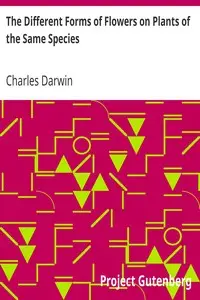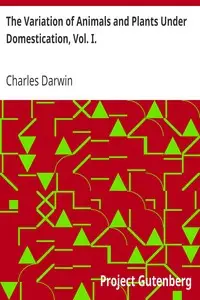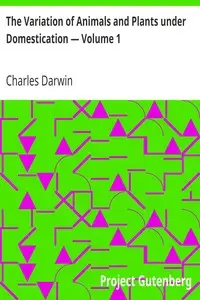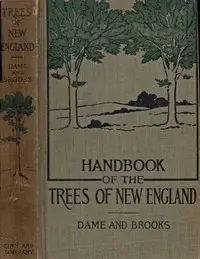"The Different Forms of Flowers on Plants of the Same Species" by Charles Darwin is a late 19th-century exploration into the fascinating world of floral diversity, investigating how plants of the same kind showcase different flower shapes to boost their chances of reproduction. Darwin highlights heterostyly, a clever trick where plants grow different types of flowers to manage their breeding. Building on his previous work, the book meticulously analyzes how these floral differences encourage cross-pollination and mixing of genes, diving into plant reproduction and the amazing variations found in flowers, like those in primroses and cowslips. The initial chapters lay the groundwork, presenting scientific data that reveal how differences in flower parts, such as pistils and stamens, directly affect pollination and seed creation, all pointing to the broader story of plant evolution.

The Different Forms of Flowers on Plants of the Same Species
By Charles Darwin
Discover a world where plants cleverly change their flower shapes to control how they reproduce and pass on their traits.
Summary
About the AuthorCharles Robert Darwin was an English naturalist, geologist, and biologist, widely known for his contributions to evolutionary biology. His proposition that all species of life have descended from a common ancestor is now generally accepted and considered a fundamental scientific concept. In a joint publication with Alfred Russel Wallace, he introduced his scientific theory that this branching pattern of evolution resulted from a process he called natural selection, in which the struggle for existence has a similar effect to the artificial selection involved in selective breeding. Darwin has been described as one of the most influential figures in human history and was honoured by burial in Westminster Abbey.
Charles Robert Darwin was an English naturalist, geologist, and biologist, widely known for his contributions to evolutionary biology. His proposition that all species of life have descended from a common ancestor is now generally accepted and considered a fundamental scientific concept. In a joint publication with Alfred Russel Wallace, he introduced his scientific theory that this branching pattern of evolution resulted from a process he called natural selection, in which the struggle for existence has a similar effect to the artificial selection involved in selective breeding. Darwin has been described as one of the most influential figures in human history and was honoured by burial in Westminster Abbey.



















